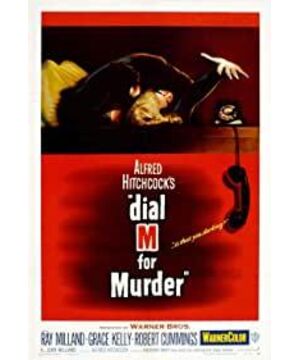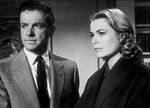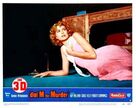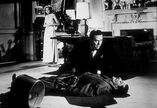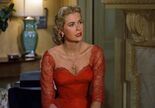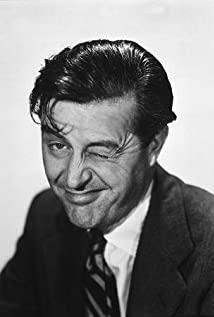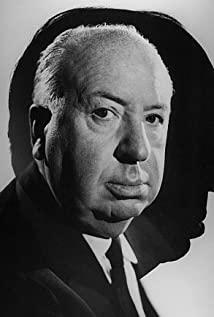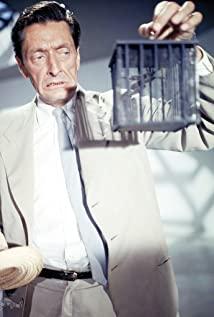Analysis of the play:
1. Construction
Beginnings: Wife Margaux and Mark have an extramarital affair, Margaux's letter to Mark is lost, extorted, paid but never recovered.
Development: Husband Tony tricked Margot Marque into not going to the theater because of work, so he stayed at home to meet his old classmate Shi Wang. Tony is known to blackmail and lure the ex-convict Shi Wang to murder his wife Margot. (plot point 1)
Climax: Tony explains the plan.
2. Confrontation
1. The Beginning: Murder (Key Link 1)
Beginnings: The night of the plan, Tony and Mark go to a party together.
Development: Tony's watch stops, over time - Shi Wang goes out to give up - phone rings - Margaux answers.
Climax: Swan pulls Margaux from behind the curtains - Margaux kills Swan with scissors - Tony learns on the phone and tells his wife to stay still until he returns.
Ending: Tony returns, reassures his wife - calls the police - rearranges the scene (burns the tape, replaces the stocking, hides the other stocking, puts the letter on Shi Wang) (midpoint).
2. Development: Survey (Key Link 2)
Beginning: Police collect evidence, find stockings and letters.
Development: Police Detective Questions.
Reasoning how Shi Wang got into the house.
Tony leads the detectives into thinking that Shi Wang stole his wife's bag and keys and copied them.
Shi Wang had no keys on him.
Climax: Detectives tip Tony and tell Margaux and Mark that their adultery has been exposed - what they confessed to - extortion found - detectives suspect that Margaux opened the door and deliberately killed (plot point 2).
Ending: Margaux is sentenced to death.
3. Ending
beginning:
Mark came, Tony hid the box in the bedroom.
Mark rescues Margo, imagines Tony's crime process (but the key is in the wrong place), and makes Tony take the blame for Margo.
developing:
Detectives come, Mark is hiding in Margaux's house.
Pretending to drop the keys, the ambush pen keys are just as confusing.
The detective asked Tony the source of the cash, and Tony succeeded in dealing with it.
The detective mentioned the missing box.
Climax: Mark finds the box, Tony and Mark tell the detective about the crime together - The detective doesn't believe it - The detective changes his coat and gets Mark's key - Mark goes out - The detective enters - Margaux is brought home - - The detective put Shi Wang's key back in the bag and sent it back to the police station - The detective explained the reason.
Ending: Tony comes home and finds that the key won't open the door - thinking - taking out the key under the stair carpet to open the door - Tony exposed.
Director's Analysis:
use of light
In the segment where Margaux was judged, the director used the light position change from right to left to right to represent gazes and torture from different directions. The light constantly changed on Margaux's face. The action of turning her head to look in the direction of the light source when it sounded, showed Margaux's confusion, anxiety, panic, and overwhelm. Then along with Margaux's guilty sentence, when the light position returned to the left again, the light became red light, the ratio of light increased, the shadow on Margaux's face deepened, and half of his face was in shadow, showing Margaux's heart despair, fear. Then cut to the judge's shot, and when you cut back to Margaux, a green light appeared on Margaux's face, intertwined with the red and red light in the background, showing a strange feeling, showing the judgment The strangeness of distorting the facts and the complexity and horror of Margaux in the face of this judgment.
This also reflects the prominent use of color in the film. Margaux wears black clothes, expressing her suspected gloom. The background of the trial is mainly white at first, with a hint of red. As the interrogation progresses, the red gradually deepens, showing that Margaux's situation is becoming more and more dangerous, creating a A sense of crisis and intense conflict. When we cut to the judge’s shot after the trial and conviction, we found that the judge’s uniform was also red in addition to the background, suggesting the source of Margaux’s danger. The judge’s death sentence brought her danger.
In this passage, the use of voice is also very good, the music is slightly tense at the beginning, the rhythm is relatively stable, as the culture progresses, the rhythm begins to chaotic, the pitch becomes higher, and the "guilty" sentence is accompanied by an accent , indicating that the judgment is over, and bad luck is coming. And replace the trial in a courtroom setting with voiceover lines, a treatment of symbolism and omission.
This passage comprehensively uses light, color, sound and other means, and uses symbols and omissions to concisely and powerfully express the process of the trial, highlighting the characters' situations and inner changes.
When his wife called Tony, Tony and his wife were tender and sweet on the phone, and the conversation was relaxed and pleasant, while Shi Wang turned off the lights and rehearsed the murder scene, which formed a sharp contrast. Shi Wang turned off the lights in the living room. The light in the bedroom cast a contrasting long shadow on the wall. Shi Wang became a silhouette in front of the bedroom, while Tony's body and face were basically in the dark, only a little bit of light from the bedroom light source. Cool contour light. The throbbing red flames in the fireplace suggest the tension, evil, and danger of the operation, and create tension and suspense over whether the plan succeeds or whether Margaux survives, worrying the fate of both sides of the audience.
In the end, Tony entered the door, and the light suddenly came on, suggesting that Tony was exposed and the truth of the case was revealed.
Filming angle:
The bird's-eye view of the camera as Tony rehearsed the course of action for Shi Wang, allowing the audience to clearly see the structure of the room, the course of action at the time of the murder, and the location of the murderer and Margaux in the room, as well as the murderer and Margaux. The positional relationship of the song.
When Shi Wang was standing in front of the table, Tony said that when Shi Ma, who committed the crime, was standing at Shi Wang's position, the camera was changed from an overhead shot to an upward shot, guided by the foreground of the table and Shi Wang's eyes looking at the table, creating a scene where the murder is about to be murdered. The tension and horror that happened.
space
The film space is mainly in the house, forming a closed space narrative. The space of the film is closely related to the narrative. Tony's design of the crime route is closely related to the structure of the room. The positional relationship of the table, the telephone and the curtains provides a hiding place for the murderer. Dirt is another way for the detective to exclude the window, and then lock the focus on the door, and then on the key, and the close positional relationship between the door and the stairs at the door provides a narrative that Shi Wang interrupted and gave up and went out. Putting the key back under the stair rug offered the possibility, laying the groundwork. And the close relationship between the bedroom and the door provides a rationale for Mark's choice to hide in the bedroom in the third act in a hurry to avoid the police, and promotes the plot of Mark finding the box in the bedroom.
use of props
Letter: Obtaining Shi Wang's fingerprints by falsely dropping them became the key evidence for forcing him to murder for himself, and the key evidence for framing Margaux.
The key: It is characterized by a similar appearance. It is revealed through Shi Wang's door that he placed the key under the carpet to lay a foreshadowing. Tony put Shi Wang's key in Margaux's bag to advance the plot.
Stockings: Tony swaps one of Margaux's stockings for the straps and hides the other, and the socks become the key evidence to frame Margaux.
Shooting angle.
Photo: Tony used the group photo of his classmates on the wall to get closer to Swan, and used it to direct the detective's attention to Swan's identity, and through the coincidence of the time and place where she met Swan and Margaux lost the package , which in turn directs the detective's attention to the relationship between Swan and Margot.
Scissors: The scissors that Margaux forgot on the table became an important factor in the plot reversal, Margaux used the scissors to kill the murderer, and Tony faced a crisis after his failed murder.
View more about Dial M for Murder reviews


